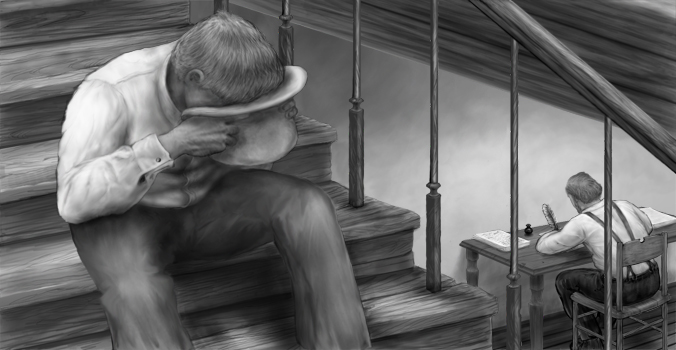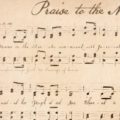Question
Dear Gramps,
I would like to know the exact way the Prophet Joseph translated the Book of Mormon. For instance, I read that at first he used a seer stone instead of the Urim and Thummim which he placed in his hat and buried his face into the hat to block out the light. A sentence of the Book of Mormon would appear and beneath it would appear the English translation. Are the testimonies of eyewitnesses confusing the seer stone with the Urim and Thummim? If not, what happened to this stone? I’d like to clarify this for my own mind and have an understanding of the mechanics of translating the tablets.
Al
Answer
Al,
The Book of Mormon, regarded as another testament of Jesus Christ, provides a vital foundation for the beliefs of members of The Church of Jesus Christ of Latter-day Saints. Joseph Smith’s translation of this sacred text is not merely a story of linguistic conversion but a narrative rich with divine revelation, personal conviction, and the power of faith. By examining the methods and tools Joseph used, the spiritual assistance he received, and the testimonies of those who witnessed the process, we gain a deeper understanding of this pivotal event in Latter-day Saint history.
Joseph Smith primarily utilized two remarkable tools in the translation of the Book of Mormon: a seer stone and the Urim and Thummim, which are described in biblical texts as divine interpreters. The seer stone, a smooth, oval-shaped stone, was often placed in a hat to block out light, allowing Joseph to focus on the words that appeared in the darkness. This method, as testified by his contemporaries, was both unusual and miraculous.
David Whitmer, one of the witnesses to the translation, recounted, “Joseph would read the English translation from the stone to his scribe, Oliver Cowdery, who would write it down. If there was an error in transcription, the text would remain visible until corrected” (Whitmer, 1887). This process highlights the collaborative effort between Joseph and his scribe, emphasizing the role of revelation in bringing forth the text.
The Urim and Thummim, another tool given to Joseph, consisted of two transparent stones set in a frame. According to the Church’s teachings, these interpreters were provided by God to assist in translating the engravings on the gold plates. Joseph Smith described the translation process as a spiritual endeavor, indicating that it was not conducted through conventional means but rather through divine inspiration and guidance.
Central to the translation of the Book of Mormon is the belief in divine assistance. Members of The Church of Jesus Christ of Latter-day Saints hold that the translation was not merely a linguistic task but a spiritual mission empowered by God. In Doctrine & Covenants 17:6, it is affirmed, “He has translated the book, even that part which I have commanded him, and as your Lord and your God liveth it is true.” This declaration underscores the notion that Joseph’s efforts were divinely sanctioned.
Joseph Smith’s mother, Lucy Mack Smith, reflected on her son’s limited formal education, asserting that the translation was a marvel given his background. She emphasized that “the translation of the Book of Mormon was nothing less than marvelous to her” (History of Joseph Smith, 133-134). This sentiment echoes the belief that the translation was an act of divine revelation rather than a product of human intellect alone.
Numerous witnesses have provided accounts of the translation process, affirming its authenticity and divine origin. Among them were the Three Witnesses: Oliver Cowdery, David Whitmer, and Martin Harris, who claimed to have seen the angel Moroni and the gold plates themselves. Their testimony states, “We declare with words of soberness, that an angel of God came down from heaven and brought and laid before our eyes, that we beheld and saw the plates” (Testimony of the Three Witnesses, Book of Mormon).
Additionally, the Eight Witnesses, which included family members and friends, attested to having physically handled the plates, stating, “We have seen and hefted the plates” (Testimony of the Eight Witnesses, Book of Mormon). These accounts provide a collective affirmation of the translation’s legitimacy, reinforcing the belief that Joseph Smith was a prophet called of God to restore the gospel.
The Book of Mormon was engraved on gold plates that contained the history of ancient American peoples and their teachings concerning Jesus Christ. The original language is often referred to as “Reformed Egyptian,” a term mentioned in the text itself (Mormon 9:32). Scholars suggest that the translation involved rendering Hebrew literary styles into English, which would have made the text more accessible to 19th-century readers.
Royal Skousen, a prominent scholar in this field, has noted that many changes made from the original text to the first edition were often necessary to smooth out awkward translations from the Hebrew-like constructions present in the original text (Royal Skousen’s Analysis of the Book of Mormon Textual History). This indicates that while the translation was not a direct word-for-word rendering, it successfully conveyed the original meanings and messages in a way that resonated with the English vernacular of Joseph Smith’s time.
The translation process was not solely a linguistic endeavor; it was deeply spiritual and required immense faith. Joseph Smith’s conviction in his divine calling propelled him to undertake this monumental task, often requiring him to be in the right frame of mind to receive revelation. His belief that he was a prophet called of God provided the strength needed to navigate the challenges he faced, including skepticism from outsiders and personal struggles.
Joseph once reflected, “I knew that I was in the presence of the Lord, and in the presence of the angel” (Joseph Smith, History of the Church, 1:54). Such declarations reveal the profound spiritual commitment behind the translation, showcasing that faith was an integral part of the process.
Joseph Smith’s translation of the Book of Mormon is a profound testament to the belief in divine guidance, the power of faith, and the role of witnesses in the restoration of the gospel. The methods employed, the spiritual assistance received, and the testimonies of those who observed the process all serve to reinforce the belief that this sacred text was divinely inspired. For millions of Latter-day Saints today, the Book of Mormon remains a foundational scripture, bringing forth messages of Christ and His teachings.
Gramps







